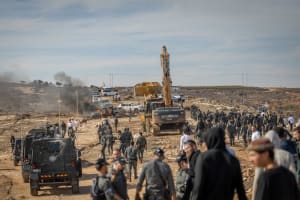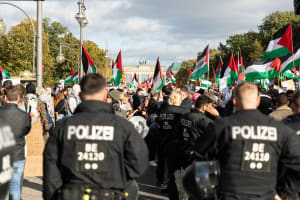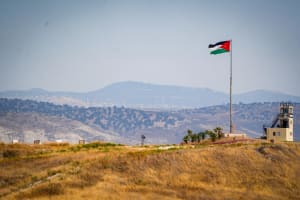The consequences of digital dehumanisation against Jews
When hashtags make climate and climate finds a target

What is produced when a slogan accrues coordinates?
On platforms that imitate civic space while discarding civic restraint, Jews are remodelled as stock exhibits: fixer, intriguer, hidden hand. Old libels return with fresher fonts. A sneer becomes a shareable tile, irony supplies a thin varnish, and the counterfeit ovation of likes supplies a verdict without a trial. Repetition passes for corroboration; noise impersonates news. In that atmosphere a person is treated as an emblem, and emblems invite handling.
The method is steady rather than subtle. Context is pared away until a pre-selected “essence” remains, obligingly similar to the pamphleteer’s favourites. A clipped quotation is treated as proof, a photograph as confession. “Just asking questions” arrives as inquiry but operates as catechism. Timid users borrow boldness from the glow of the screen and the safety of numbers. With each echo the price of the next echo falls, and what ought to attract shame re-enters under the heading of fashionability.
Hashtags, sold as participation, function as routing. They herd the ardent, label the quarry, and, under the piety of “public information,” publish the trail. A synagogue becomes a pin on a map. A student society is promoted to “front” and then listed with building and room. A small café acquires geopolitics by virtue of its menu. The choreography is dependable: a clip edited for outrage, a caption that paints a street as enemy ground, a place and hour that somehow announce themselves. Speech migrates into logistics.
Language arrives pre-sanitised. Cleansing, purity, resistance, justice: incense burnt beneath old bile. A brick through a window is marketed as expression. A curse bellowed at a family on the way to prayers presents itself as accountability. Euphemism launders motive; conscience steps away in spotless garments while the broom does its work on the pavement. This is not debate but charlatanry with props.
Permission circulates by insinuation. An historical allusion is sanded down to venom. A clipped line is tossed to those who know when to nod and when to bare teeth. Nothing explicit; everything understood. A rumour about a local fundraiser is welded to a planetary conspiracy and furnished with a postcode. No leadership is required. Climate issues the instruction more efficiently than any governor.
The reckoning appears elsewhere, and later. It is written in minor edits to ordinary days. A mezuzah is removed and placed in a drawer. A Star of David is turned inward on its chain. Parents redesign the school run to avoid the corner where slogans recruit megaphones. A library foyer becomes a gauntlet of accusation. Community centres reallocate from books and music to shutters and cameras. These are not trends, but detours.
A discreet account carries the earlier schooling: self-erasure. Lower voices. Discreet festivals. Side streets at dusk. Europe once taught these lessons with by-laws and truncheons; the digital edition is automated and ubiquitous, its authority borrowed from constant presence. Dehumanisation requires no podium and no censor; an algorithm suffices, assisted by an audience that mistakes heat for light and rancour for seriousness.
The emblem, once installed, becomes a problem; the problem, made portable by design and schedule, becomes a target. The theatre is mounted as civic virtue. Applause accrues to the cast; the bill arrives at the nearest family in recognisable dress. The claim that this is “only talk” fails on contact with the pavement. Speech ceases to be only speech when it lists a door, a time, a name. The same tools that sell trainers on Tuesday summon a crowd on Friday. The result is a theatre of menace performed as participation.
By weekend’s close a city confesses its alteration. A café that once sounded like conversation acquires an anxious quiet. A school extends its security briefing past the bell. A Friday walk home shortens by a few careful blocks. Platforms measure impressions and declare that the world has spoken. Unmeasured are the distances added to daily routes, the tightened voices, the unfastened symbols returned to drawers. The passage from hashtag to hate crime is not mysterious. It is the steady reification of a people into an emblem, then into a case, and the case into a target, with the timetable politely supplied by the feed.

Ab Boskany is Australian poet and writer from a Kurdish Jewish background born in Kurdistan (northern Iraq). His work explores exile, memory, and identity, weaving Jewish and Kurdish histories into fiction, poetry, and essays.












